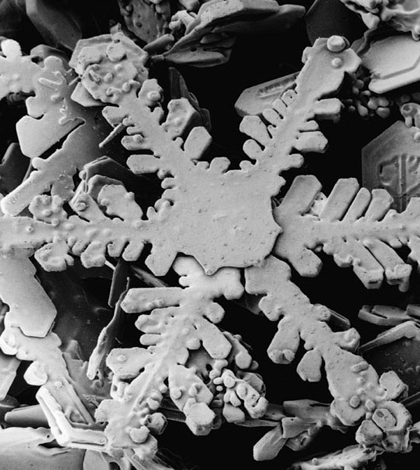Michigan Tech scientists study extreme snowfall

Electron microscope image of a hexagonal dendrite snowflake (credit: USDA, via Wikimedia Commons)
Researchers at Michigan Technological University are looking into extreme snow, according to a release. Snowflakes require a speck of dust or another base to form around, but it’s unclear why it continues to snow in pristine areas after dust particles have been cleared from the air.
To investigate, the researchers are using data on Arctic clouds to develop models of how snow forms. The clouds have been studied extensively and the Arctic is an area known for long periods of extreme snowfall. But instead of only considering dust particles for snow formation, the models allow for snowflakes to form around other particles.
With this modification, researchers say extreme, seemingly endless snowfall can be explained. They note that these other particles provide bases for larger snowflakes because they stay in the atmosphere longer, allowing for more ice crystal build up, before falling to Earth.
Image: Electron microscope image of a hexagonal dendrite snowflake (credit: USDA, via Wikimedia Commons)




0 comments